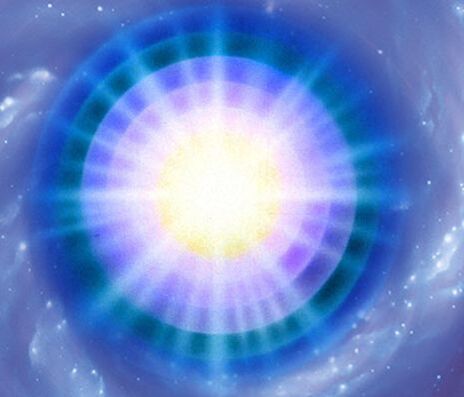|
It is widely speculated that in coming decades living beings may be developed with advancement in modern science and technology. The vital question about the very existence of being living is probed here from the angles of Science, Philosophy and Hinduism.
Living Beings are different from non-living things and dead bodies in certain key differentiating characteristics. Android Robots are the latest technological innovation but still remains non-living despite show emotions and movements like human beings. Self-Consciousness (चेतना, आत्मा, soul) is the key differentiating character. Modern science demands proofs for existence of soul or atman. However, the explanation to the question is given logically in Hinduism. Atman is subject and rest of the body including brain, mind, ego, memory, perception etc.is object. The evidence of Atman being subject is discussed in next para. During the four states of life i.e. waking state, dreaming state, deep sleep state and “Turiya state” (absence of first three states), who is witnessing, it is Atman. The non-living things or dead bodies are entirely physical bodies or materials. It is clearly visible that these lack self-awareness or self-consciousness. No computer engineer can claim, how sophisticated robot or supercomputer is, it has inner awareness. There is no witness inside in Robot. Hindu scriptures such as Upanishads, Bhagavad Gita etc. have explained the size, nature, and location etc. of Atman or soul. It is explained that it is atomic in size, eternal, pure, permanent, perceptive, neutral, inactive, imperishable, immortal, confined (enveloped by body) and independent. Regarding location, some scriptures mention its location in heart and some in brain. It is argued, if Atman is in brain, how brain dead people are surviving or if Atman is in heart, how during heart attack, people survive. More logically, the other scriptures have mentioned that it is “all pervasive”. It can be understood in a way that all living cells have consciousness whatever form these take. Hence our body formed of living cells has soul in itself. Gaudapada, the Hindu philosopher & scholar of the Vedanta school of Hindu philosophy, explained about the soul in his Advaita (non-duality) philosophy i.e. it is all pervading, unchanging and without Dukkha (sorrow). Universe which is unreal is creation of Brahman-Atman. He further says, we imagine things in our mind, we create things in our mind, we destroy things in our mind; yet all these things are not different from it, the Atman (gender neutral). All such constructions create dualities in our imagination, are Maya. The true reality is only Atman. His philosophy inspired others such as Adi Shankara who called him a Paramaguru (highest teacher). The Being or the Existence i.e. Atman is discussed sequentially as under: Living Beings and Robots – Self-Awareness The key characteristics such as self-replication, self-organization and self-awareness (consciousness) differentiate living beings from non-living beings. Modern Science and Technology has revolutionized in developing ultra-intelligent, emotional and responsive robots to blur the differentiation. Sony announced the release autonomous robot which can ‘form an emotional bond with members of the household. Robots may be made smarter than human Beings in future, still the key differentiating characteristics remain. When living being dies, it will no longer come back to life, as opposed to robots that can easily be repaired. Living Being and Dead Body The key difference between living and dead is absence of Atman, according to Hinduism. Similarly, philosophers around the world such as Plato, Aristotle, Ptolemy, Socrates, Hippocrates, Pythagoras, Origen and many others concluded that existence of life force separates the physiological parts — DNA, neurons, the brain, organs, cells and so on. The physical body—including all the DNA and neurons—remains intact in a lifeless, dead body. The Material Body The body of living beings is made of the elements such as carbon, hydrogen, oxygen, etc. Almost 99% of the mass of the human body is made up of six elements: oxygen (65%), carbon (18.5%), hydrogen (9.5%), nitrogen (3.2%), calcium (1.5%), and phosphorus (1%). Only about 0.85% is composed of another five elements: potassium, sulfur, sodium, chlorine, and magnesium. These atoms combine together to form complex molecules of various types: proteins, carbohydrates, lipids, and nucleic acids which in turn form the building blocks for cells of muscles, brain, bones, skin, blood, etc. Everyone’s body is made of the same basic stuff. All living things, large or small, plant or animal, are made up of cells. Most living things are made up of one cell and they are called unicellular organisms. Many other living things are made up of a large number of cells that form a larger plant or animal. These living things are known as multicellular organisms. According to Rishi Kapil, who founded Samkhya Darshan (around the 6th - 7th century BC), postulated that Prakriti (nature) is the root cause of formation of body, mind, ego etc. (except soul & almighty) which has three attributes i.e. sattvic, rajas & tamas. Tendency of love & affection, endurance, contentment, wisdom and detachment are sattva attributes, tendency of luxuries are attributes of rajas and wickedness, ignorance, attachment and weakness are attributes of tamas. Pleasures and pains are not the attributes of soul (Jivatma) but perceived in it. Soul or Atman (also called Jivatma) According to Vedanta Darshan or Brahma Sutra of Shankaracharya (around 5th century BC), Atman is agent of Brahman (Supreme Consciousness, commonly known as God or Parmatama). The size, location and characteristics of Jivatma are explained as under:
Shree Krishna has explained the attributes in Chapter 2 of Shrimad Bhagavad Gita as under:
0 Comments
|
Archives
March 2024
Categories
|

 RSS Feed
RSS Feed